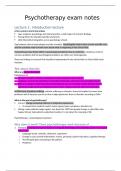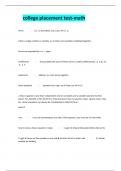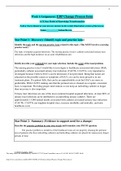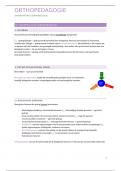Samenvatting
Complete samenvatting ter voorbereiding van het tentamen- Psychotherapy (SOW-PSB3DH50E)
- Instelling
- Radboud Universiteit Nijmegen (RU)
Met deze complete samenvatting heb ik mij voorbereid voor het tentamen van Psychotherapy. Deze heb ik met een 7 gehaald!
[Meer zien]













